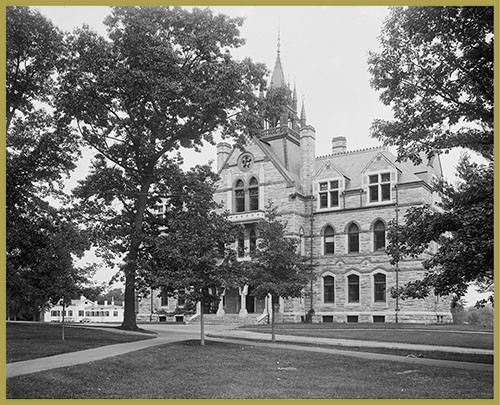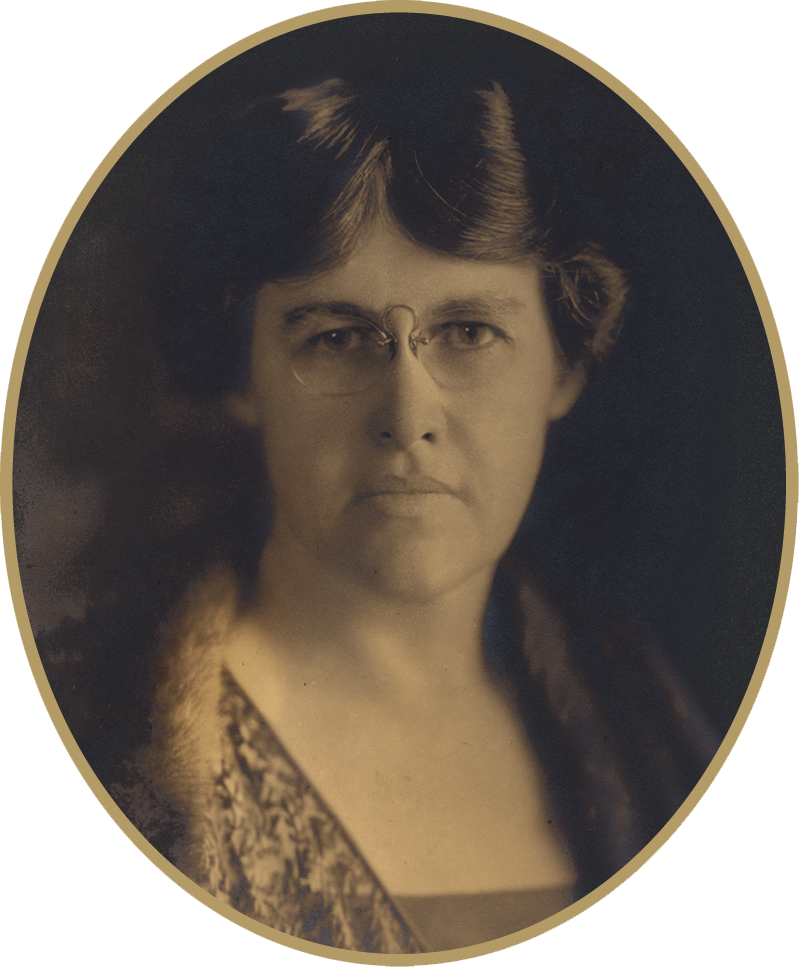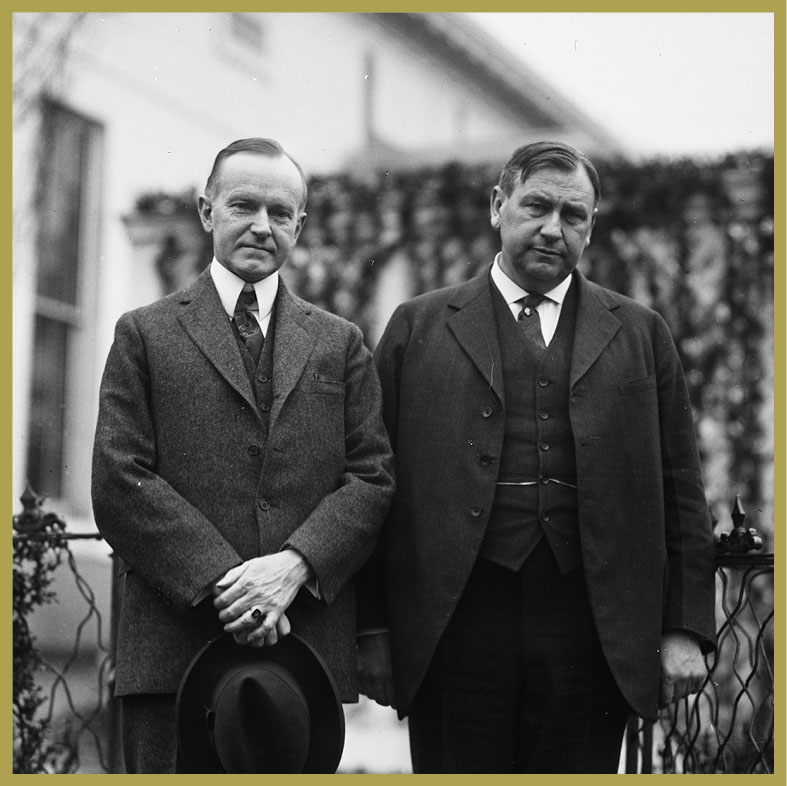Harlan Fiske Stone: A Man for All Seats
Life Before the Supreme Court
 Walker Building, Amherst College campus, c. 1890-1891.
Walker Building, Amherst College campus, c. 1890-1891.
Library of Congress
“Doc” Stone
Born in Chesterfield, New Hampshire on October 11, 1872, Stone grew up in Amherst, Massachusetts and graduated from Amherst College in 1894. While in college, he served as class president for three years and played right guard on the football team. Stone’s classmates referred to him as “Doc,” a childhood nickname, and predicted that he would “proceed to be the most famous man” in their class. Little did they know that his connections to another Amherst alum, Calvin Coolidge (Class of 1895), would make this prediction a reality.
A Match Made in Chesterfield
Throughout his younger years, Stone maintained correspondence with Agnes Harvey, a childhood friend from Chesterfield. After a lengthy engagement, the couple married in a small ceremony at Agnes’s childhood home on September 7, 1899. They welcomed sons Marshall and Lauson in 1903 and 1905, respectively. Wanting more space for their family, the Stones moved to Englewood, New Jersey in 1906. There, Stone enjoyed fishing, hiking, theater, the opera, and spending many a Sunday tending to his flower and vegetable gardens.
 Agnes Harvey Stone, c. 1924.
Agnes Harvey Stone, c. 1924.
Underwood & Underwood
Teacher, Lawyer, Dean
Before getting married and moving to Englewood, Stone worked briefly as a teacher, first in Massachusetts and later in New York City, where he taught part-time while attending Columbia Law School. After graduating in 1898, Stone divided his time between private practice and teaching law at Columbia, where his students held him in high regard. He took a five-year hiatus from teaching to focus on private practice, but returned to Columbia in 1910 when he was named Dean of the Law School. Stone held the post until 1923. While Dean, Stone was admitted to the Supreme Court Bar on March 23, 1920. In the first of only two appearances he would make as an attorney before the Supreme Court, he successfully represented the J.P. Morgan estate in Ownbey v. Morgan (1921).
1 / 4
Envelope addressed to Mrs. Harlan Stone at the Stones’ New Jersey address.
2 / 4
Columbia Law School Reading Room, c. 1904.
University Archives, Rare Book & Manuscript Library, Columbia University Libraries
3 / 4
Old Senate Chamber in the United States Capitol where the Supreme Court met from 1860 to 1935. In 1921, Stone argued Ownbey v. Morgan in this room.
4 / 4
1922 Class photo that includes Dean Stone (front row, sixth from left).
Special Collections, Arthur W. Diamond Law Library, Columbia Law School
❮
❯
 President Coolidge and Attorney General Harlan Fiske Stone at the White House, 1924.
President Coolidge and Attorney General Harlan Fiske Stone at the White House, 1924.
Library of Congress
Attorney General Stone
In 1924, the Attorney General of the United States, Harry M. Daugherty, resigned following revelations of corruption in the Department of Justice. Acting to fill the vacant position, President Calvin Coolidge appointed Stone, his old acquaintance from Amherst College. As Attorney General, Stone served as the head of the Department of Justice and chief law enforcement officer of the federal government. Though he remained in the post for less than one year, Stone is credited with improving the department’s reputation. The position marked his transition from the private sector into public service, where he would remain for the rest of his career.
“If violation of the federal law occurs, and there is a reasonable probability that prosecution will succeed, then it is [the Attorney General’s] duty to act without fear, without favor, and without oppression to secure its enforcement.”
— Stone, as recorded in the Boston Transcript, November 22, 1924
Arguing a Second and Final Time Before the Court
The Department of Justice routinely submits amicus curiae (friend of the Court) briefs related to cases on the Supreme Court’s docket. At times, the Attorney General may even represent the government at oral argument, which Stone did in Ex parte Grossman (1924), a Prohibition-related case concerning separation of powers. Attorney General Stone argued that the President had the authority to commute a sentence for criminal contempt of court. A unanimous Court agreed, ruling that the President’s action was constitutional. It would be Stone’s second and final time arguing before the Court.